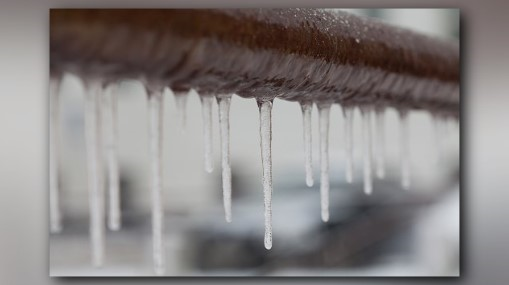Important Tips for Avoiding Frozen Pipes in Winter Conditions
Important Tips for Avoiding Frozen Pipes in Winter Conditions
Blog Article
Everybody may have their unique thinking with regards to How To Avoid Freezing Pipes.
:strip_icc()/snow-outdoor-faucet-pipes-4af65d1e5e904fb1aa7bf74071fe5d89.jpg)
Cold weather can damage your plumbing, specifically by freezing pipes. Right here's how to prevent it from occurring and what to do if it does.
Introduction
As temperatures decline, the risk of frozen pipes increases, potentially causing expensive repair services and water damage. Recognizing how to prevent frozen pipelines is vital for home owners in chilly climates.
Prevention Tips
Insulating prone pipes
Cover pipelines in insulation sleeves or make use of warmth tape to secure them from freezing temperatures. Concentrate on pipelines in unheated or exterior locations of the home.
Home heating strategies
Keep indoor spaces properly warmed, especially locations with pipes. Open cupboard doors to permit cozy air to circulate around pipelines under sinks.
Exactly how to recognize icy pipelines
Search for reduced water flow from taps, uncommon odors or sounds from pipes, and noticeable frost on exposed pipelines.
Long-Term Solutions
Structural modifications
Take into consideration rerouting pipelines away from exterior wall surfaces or unheated areas. Include extra insulation to attics, cellars, and crawl spaces.
Updating insulation
Purchase high-grade insulation for pipes, attics, and wall surfaces. Appropriate insulation helps preserve regular temperatures and minimizes the threat of icy pipes.
Shielding Exterior Pipes
Garden pipes and outside faucets
Separate and drain pipes yard hose pipes prior to winter season. Set up frost-proof spigots or cover outside taps with shielded caps.
Understanding Frozen Pipelines
What causes pipes to freeze?
Pipes freeze when exposed to temperatures listed below 32 ° F (0 ° C) for extended periods. As water inside the pipes ices up, it expands, putting pressure on the pipeline wall surfaces and potentially creating them to rupture.
Risks and damages
Icy pipes can lead to water supply interruptions, property damages, and expensive fixings. Ruptured pipelines can flooding homes and create considerable architectural damages.
Indications of Frozen Piping
Recognizing icy pipelines early can prevent them from rupturing.
What to Do If Your Pipes Freeze
Immediate activities to take
If you think icy pipelines, maintain faucets available to eliminate stress as the ice melts. Make use of a hairdryer or towels soaked in warm water to thaw pipes gradually.
Conclusion
Protecting against frozen pipes calls for aggressive measures and quick feedbacks. By understanding the reasons, indicators, and preventive measures, house owners can secure their plumbing during winter.
5 Ways to Prevent Frozen Pipes
Drain Outdoor Faucets and Disconnect Hoses
First, close the shut-off valve that controls the flow of water in the pipe to your outdoor faucet. Then, head outside to disconnect and drain your hose and open the outdoor faucet to allow the water to completely drain out of the line. Turn off the faucet when done. Finally, head back to the shut-off valve and drain the remaining water inside the pipe into a bucket or container. Additionally, if you have a home irrigation system, you should consider hiring an expert to clear the system of water each year.
Insulate Pipes
One of the best and most cost-effective methods for preventing frozen water pipes is to wrap your pipes with insulation. This is especially important for areas in your home that aren’t exposed to heat, such as an attic. We suggest using foam sleeves, which can typically be found at your local hardware store.
Keep Heat Running at 65
Your pipes are located inside your walls, and the temperature there is much colder than the rest of the house. To prevent your pipes from freezing, The Insurance Information Institute suggests that you keep your home heated to at least 65 degrees, even when traveling. You may want to invest in smart devices that can keep an eye on the temperature in your home while you’re away.
Leave Water Dripping
Moving water — even a small trickle — can prevent ice from forming inside your pipes. When freezing temps are imminent, start a drip of water from all faucets that serve exposed pipes. Leaving a few faucets running will also help relieve pressure inside the pipes and help prevent a rupture if the water inside freezes.
Open Cupboard Doors
Warm your kitchen and bathroom pipes by opening cupboards and vanities. You should also leave your interior doors ajar to help warm air circulate evenly throughout your home.

I was shown that write-up on Winter Plumbing Precautions: Preventing Frozen Pipes from a good friend on our other web property. For those who enjoyed our article kindly don't forget to pass it around. Thanks a lot for your time. Please check up our blog back soon.
Click Here Report this page